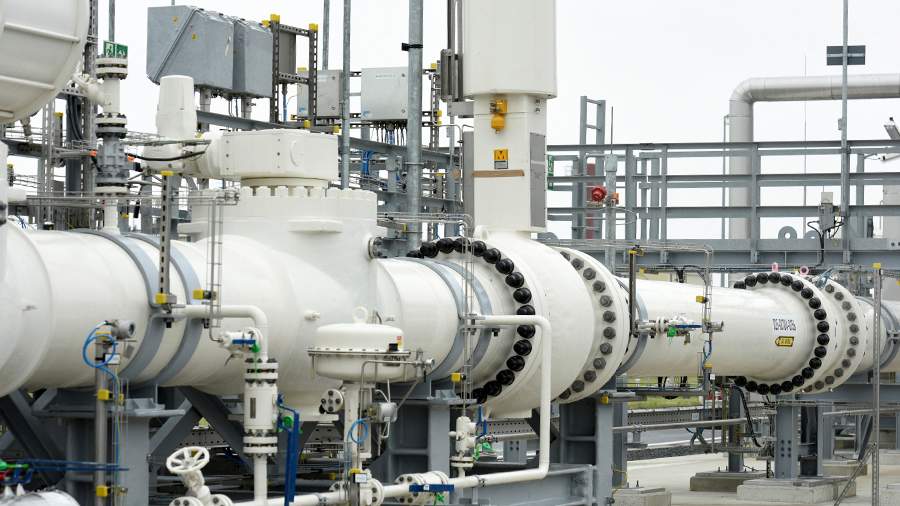
Gazprom feels the pain of sanctions
The consequences of the breakdown in relations with the West have finally caught up with both Gazprom and the Russian budget, for which the gas monopoly is an important donor. Sabotage at Nord Stream also added fuel to the fire, which resulted in the failure of gas pipelines. At the end of 2023, Gazprom showed a net loss for the first time in a quarter of a century, amounting to 629 billion rubles. The company's gas business experienced a 40% decline in revenue, from 7.72 trillion rubles at the end of 2022 to 4.41 trillion rubles. Gas exports, as anticipated, decreased by over half, from 7.3 trillion rubles to 2.9 trillion rubles. Conversely, the oil and electricity segments demonstrated resilience and even growth..
However, the issue is not solely a decline in gas sales abroad. Last year, the holding recorded a loss of 1.5 trillion rubles due to the depreciation of its assets. This was comparable to the 1.3 trillion rubles in losses recorded in 2022. However, due to record income, these losses did not receive significant attention. Gazprom does not disclose the list of toxic assets, but it is reasonable to assume that these are Nord Stream and the holding’s foreign infrastructure. The loss had to be recognised and written off at some point, which is what happened.
At the end of May, the issue of dividends for the corporation will be decided. Analysts remind that payments are calculated taking into account the amount of profit (in our case, loss), adjusted for a number of parameters, including those same losses from depreciation. At the same time, the ratio of net debt / EBITDA should not exceed 2.6. However, due to the growth of debt last year, the indicator turned out to be worse. In such a situation, the board of directors is not obliged to (although it may) recommend a payment of 50% of adjusted annual net income.
At the end of 2022, the holding distributed 1.2 trillion rubles among shareholders, with half received by the state. These were interim dividends for the first six months, not for the entire year. Analysts warned in the second half of 2022 that there was no point in expecting dividends from Gazprom in the coming years, given the difficulties with Western markets. However, it was too early to completely lose hope. The state has identified an alternative source of revenue to replenish the budget from gas sales: since the beginning of 2023, an additional 50 billion rubles in the form of mineral extraction tax have been withdrawn from the holding company every month. Moreover, the monopoly’s capital costs are on the rise. In 2022, they amounted to 2.1 trillion, and in 2023, they reached 2.4 trillion. The holding continues to develop new gas production centres in Yamal, Yakutia and the Irkutsk region, and the Power of Siberia main gas pipeline – 1" and gas processing (Amur Gas Processing Plant). From 2024, gasification of Russian regions was added to the investment programme. However, the programme itself was compressed to 1.6 trillion.
The loss incurred last year marks the end of Gazprom's previous operating model, which was focused on exporting raw materials to global markets, primarily in the West. At the same time, it opens a new chapter in which the holding will have to adopt a fundamentally new strategy. The key question is whether to change the West for the East, once again relying on exporting gas abroad – but now to China. This would involve building another expensive branch, the Power of Siberia 2, in addition to the underutilised Power of Siberia 1. New pipeline projects planned until 2030 will not be able to fully compensate for the lost sales volumes in the western direction. According to the VEB.RF Institute of Research and Expertise, Gazprom’s export pipeline supplies are forecast to grow from 97 billion cubic metres in 2024 to 114 billion by 2030. 2026 - compare with 204 billion in 2021 (. The LNG market is currently undergoing a significant transformation at the hands of the Americans, which has yet to be fully understood by Russian producers.)
There are other promising and, most importantly, profitable areas for growth: the production and export of electricity, methanol, plastic, fertilisers and other gas chemical products. The market, investors and the state are expecting Gazprom to take fundamental new steps.
